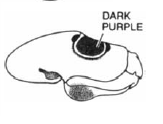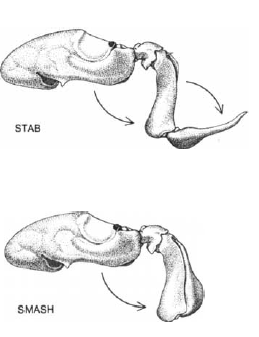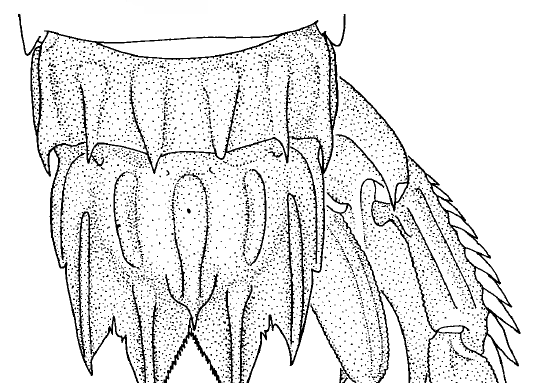Physical Description
The most notable features of a mantis shrimp are the two large forelimbs it uses to attack its prey. In Gonodactylus smithii these raptorial appendages are adapted for smashing and so they are called clubs.
 Image 1: The raptorial appendage of Gonodactylus smithii. Source: 1975 Scientific American, INC (Caldwell and Dingle) Image 1: The raptorial appendage of Gonodactylus smithii. Source: 1975 Scientific American, INC (Caldwell and Dingle)
 Image 2: Strategies adopted by G. smithii with its claw. - Source: 1975 Scientific American, INC (Caldwell and Dingle) Image 2: Strategies adopted by G. smithii with its claw. - Source: 1975 Scientific American, INC (Caldwell and Dingle)
Gonodactylus differs from other genera in the family Gonodactylidae by having large ocular truncate and broader scales. G. smithii is identified in bearing the apices of its anterolateral angles acute, sharp or blunt - not spiniform. And by the slender telson carinae (Ahyong 2001).
 Image 3: Telson Carinae. - Source: Ahyong 2001. Image 3: Telson Carinae. - Source: Ahyong 2001.
The body colour varies from mottled or uniform light green to black green with juveniles typically presenting small white spots on dorsum. The raptorial appendages has meral spot dark red to purple with white outlined and the “A scale” (near the eyes) is yellow. The uropodal protopod shows a bright red dorsal spot and the setae on endopod and exopod are often purple (Ahyong 2001).
The size varies in males from 10 to 84 mm and in females from 10 to 90 mm (Ahyong 2001).
In addition, a video shows the body of a G. smithii under a torch light where is possible to see some of its particular features:
|